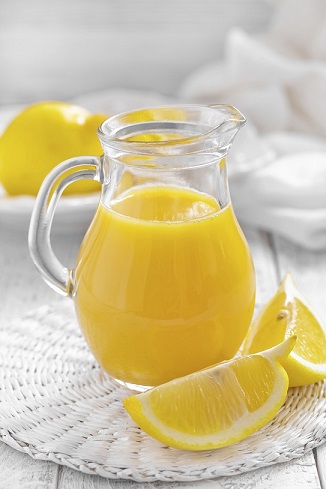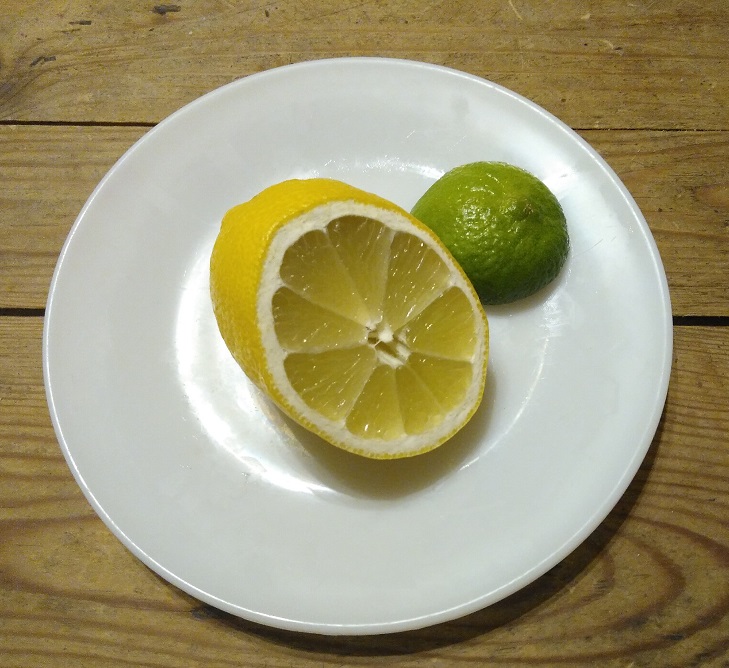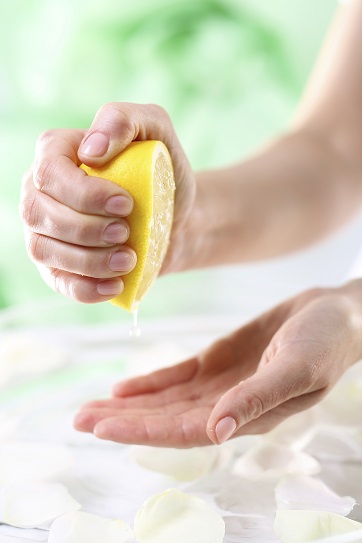 You have just discovered the natural skincare recipe of your dreams, and are delighted to see a shiny “free from harsh chemicals” label. You absentmindedly glance at the ingredients list, which reveals the words “citric acid”.
You have just discovered the natural skincare recipe of your dreams, and are delighted to see a shiny “free from harsh chemicals” label. You absentmindedly glance at the ingredients list, which reveals the words “citric acid”.
You suddenly realise that you know nothing about this ingredient. Out of the blue, there is a barrier preventing the floodgates of clear skin from finally bursting open.
If this has never happened to you, then there’s a great chance that it might. Citric acid is to topical treatments what grass is to Planet Earth. It’s absolutely everywhere, and therefore cheap, and maybe cheap and nasty.
On this website we’ve discussed several nasty preservatives or foaming agents, so you might feel some anxiety when you constantly see this name. Perhaps you’ve been reassured by its naturalness, but perhaps that only added to your scepticism. After all, it didn’t save refined vegetable oil, master of inflammation.
To silence those doubts forever, here is the definitive truth about citric acid as a topical acne additive.
The doses – too low to cause irritation
In short, the natural version of citric acid is nothing to fear when used as a minor ingredient. There’s no comparison to inflammatory phthalates in shampoo or skin-barrier destroying sodium lauryl sulfate.
Citric acid has two big roles in skincare: as an additive and an exfoliating alpha hydroxy acid. Citric acid was discovered in 8th century AD by legendary Islamic guru Jabir ibn Hayyan, but first chemically isolated by Carl Wilhelm Scheele from lemon juice in 1784.
Since then, citric acid has spread far and wide to every corner of the Earth. Crabs and shrimp contain citric acid as a preservative, shampoo to enhance the foaming of surfectants, and shower gel to improve the viscosity. Other foods include beer, canned vegetables and cake mixes. In energy drinks, citric acid is the second most popular ingredient following water.
Lowering the PH, preserving, enhancing chemical additives – citric acid can do it all. However, it’s also a topical treatment in its own right.
Citric acid is an alpha hydroxy acid, alongside lactic acid from yogurt and glycolic acid from your pharmacy, and the rare tartaric acid in grapes and malic acid in apples. AHAs are natural exfoliating agents designed to melt away the outer layer of dull and dead skin and reveal a fresh leash of life underneath. They use “keratolytic action”, instead of physically rubbing them away.
Glycolic acid is wildly popular, which should only accelerate now that seal-killing microbeads are frowned upon, while lactic and citric are the respectable B-leaguers, but there’s a problem. Glycolic acid sometimes causes red, stinging irritation and white, crusty peeling…
…which raises the question: can citric acid do the same? The answer is yes, but 1) only above the ideal 10% exfoliation concentration, which 2) is itself miles above the small preservative quantities.
Supposedly, 1% citric acid dissolves the outer 3 layers of the stratum corneum while 10% citric acid dissolves 20. Natural aloe vera probably contains 0.5% at most.
Something that fries your outer skin cells seems undeniably dodgy, but one study found that irritation only started at 20% or 25% concentration, with 10% harmless. A rabbit study was even better, with 30% harmless and 60% causing only mild swelling.
Nor does citric acid have any nasty surprises. There’s neither the inflammation of triclosan (toothpaste) nor the hormone disruption of benzophenone-3 (sunscreens). After all, it’s everywhere in nature, in oranges, limes and lemons, so your skin’s immune system won’t assault it as a foreign invader.
Weird sensitivities are always possible. Maybe your matrix metalloproteases are elevated, enzymes which recycle protein, needing just a tiny nudge to go to far. Maybe your topical regimen is suited to sloughing off dead skin cells already, leaving a raw healthy layer to burn. Maybe you have a genetic sensitivity which not even Einstein could understand.
Nevertheless, as a mere additive, natural citric acid is very safe indeed.
Mould madness – the 1# potential danger
 That’s the key word, however – natural. Most people assume that citric acid is lovingly squeezed out of an orange, but the fact is that 99% is artificially manufactured in a lab.
That’s the key word, however – natural. Most people assume that citric acid is lovingly squeezed out of an orange, but the fact is that 99% is artificially manufactured in a lab.
It’s not even chemical solvent extraction from a lemon. It’s worse – the citric acid is pumped out by carefully trained black mould.
Aspergillus niger, quite simply, is the most bad tempered thug in all of mould street. It pumps out both ochratoxin A (OTA) and malformin C, mycotoxins which are adept at increasing inflammation. OTA, for example, contaminates poorly grown beer, wine and coffee beans, causing brain fog at best, and cancer at worst.
However in 1917, the American James Curries noticed that aspergillus niger fermented glucose and manufactured citric acid. Pfizer adopted the process and by 1919, joyfully cheap citric acid was already on the market. 100 years later, it lives on, and 59% is produced by China.
It sounds dodgy right? Indeed, Aspergillus niger has escaped investigation by the skin of its teeth. It bypassed the Food Additives Amendment of 1958, when Generally Recognised As Safe (GRAS) badges were introduced. Legally, any substance declared safe before 1958 was exempt; trans-fats escaped in the same way.
Scientists have even genetically engineered aspergillus niger to 1) have higher fermentation activity, and 2) produce more citric acid as a proportion. Manufacturers almost always use glucose from genetically modified corn or sugar beets.
The citric acid in your innocent instant soup mix may have started life by trickling out of a black mould cell, rather than a garden orange.
As for acne? The fear is extra inflammation from microscopic mechanisms yet unknown. Scientists have actually identified the long-reported citric acid sensitivities, but realised that oranges and lemons have no effect, just soups or energy drinks.
Their theory is that black mould proteins could remain, the same toxins behind fatigue from cheap coffee, triggering an all out inflammatory assault. If true, this would be the perfect recipe for acne, or reddening your existing pimples.
If anything, it’s worse than solvents like hexane. These chemical extractors are eventually removed, however amateurishly, but citric acid is generated by the mould itself. It’s the black mould’s baby, a very part of it; the dangerous proteins could be inseparable.
Consider this: when destroyed using heating at 68C for 4 hours, the extinct remnants of aspergillus niger still caused a sharp inflammatory response.
The big question is its effect in a skincare product. Let’s assume for a second that the mould proteins are malicious. Inflammation could still increase in the skin’s surface, but it won’t be systematic. The tiny concentrations could be counteracted by aloe vera’s soothing antioxidants , and that’s assuming you have a sensitivity at all.
However, black mould is black mould, and if genetically predisposed, your sensitivity could easily be severe enough.
We are still in the dark, but if “citric acid” as an additive inflames your skin, its artificial moldiness is probably why.
The sunlight sensitivity question
Another supposed threat is sunlight sensitivity, but here confusion is rife.
Many gurus wisely recommend against applying citrus fruits to the skin. Supposedly, during summer in Ibiza or Spain, the first thing doctors ask stunned patients with red blotches of sunburn all over their arms is whether they were a bartender mixing in lemons or limes at a local pool party the night before.
However, the real threat is actually furocoumarins. That’s why lemon juice is possibly the worst natural acne remedy ever. Its psolaren furocoumarins react to UV light by inflating and exploding, leaving a red patch of irritation (and that’s before the mythical vitamin C).
Lower doses are actually protective, as citric acid somehow suppresses UV-triggered inflammatory chemicals like interluekin 8 and MCP1. With its AHA cousin glycolic acid, free radical formation and DNA breakages fell, while cell viability increased (study). It’s completely mysterious; none of this relates to its signature skin cell-disolving properties.
Yet the FDA has issued warnings too, saying that AHAs “may increase your skin’s sensitivity to the sun and particularly… sunburn“. They even recommend sun sensitivity warnings on all products containing citric acid. The internet’s theory is that the dead dull skin cells which people are eager to remove are actually an armour.
Glycolic acid is definitely known for photosensitivity at higher doses. Its keratinolytic properties become overwhelming, weakening the skin barrier against UV.
According to scientists, citric acid’s connection to sunlight is still a coin flip, but smaller witch hazel style doses are bound to be harmless. The real spectre remains the spectre of black mould.
Citric acid’s clear skin potential
 There’s even a chance of accidental benefits, particularly glow and youthfulness, despite being intended solely as a preservative. After all, thousands of beauty enthusiasts swear by citric acid, but some benefits are stealthier than traditional exfoliation:
There’s even a chance of accidental benefits, particularly glow and youthfulness, despite being intended solely as a preservative. After all, thousands of beauty enthusiasts swear by citric acid, but some benefits are stealthier than traditional exfoliation:
ONE: some lucky Japanese people were plucked from their homes and treated with lactic, citric, glycolic and acetic acid for 6 weeks daily. A collagen-degrading enzyme called matrix metalloproteinase-1 didn’t change, but three AHAs (with acetic failing) increased collagen and procollagen 1 significantly (study).
TWO – citric acid alone was tested at 20% concentration on human skin. 3 months later, epidermal thickness and dermal glycosaminoglycans both increased, equalling glycolic acid. The latter are structures which hold your skin’s moisture, controlling hyaluronic acid, for example (study).
A similar study found “statistically different” skin thickness after 25% citric acid treatment, with lactic and glycolic acid matching citric. Collagen fibres also increased slightly.
THREE – 120 patients applied 10% glycolic acid or a placebo twice daily, and 90 days later, there was a small but statistically significant decrease in acne. No side effects were observed either. Given their similarities above, this study is very promising for citric acid.
Far from being a hidden nasty, this ubiquitous ingredient could be a nice surprise. Scientists have even spotted a skin receptor called “transient receptor potential vanilloid” which AHAs might bind to.
Of course, there’s still the issue of tiny concentrations. We can’t suddenly ignore it. However, with a lucky roll of the dice the balance could tilt in our favour. My suspicion is that accelerating collagen factories probably requires lower dosages than irritation. It’s probably all gene stimulation and protein binding rather than manually dissolving healthy skin layers.
THE ALTERNATIVES: significantly nastier preservatives
What’s more, consider what citric acid is could have been. The following additives are dramatically worse for your acne and skin:
Quaternium-15 – years ago, formaldehyde was abundant in hair conditioners, for keeping the scent fresh and the bacteria gone. Then everybody realised that it caused cancer and the US and EU banned it in all cosmetics. Not to fear though: pharmaceutical companies sneaked round this barrier with chemicals that slowly release formaldehyde as they decompose.
Quaternium-15, for example, is found in shaving products and eye drops. It was banned in the EU in 2017 but persists in the US. Another formaldehyde-releasing chemical is diazolidinyl urea.
Parabens – a gang of 5 common chemicals, ethyl, butyl, methyl, propyl, and isobutyl paraben, used to suppress bacteria in products you repeatedly come into contact with like handwashes. They’re safer in food, digested rapidly, but absorbed extremely efficiently through the skin. Once inside, butyl paraben gets busy increasing lipid peroxides (fat-soluble free radicals), warping sperm cells and increasing allergy rates. A notorious study detected parabens in 99% of breast cancer cells.
Triclosan – a chemical which wishes only famine and pestilence on humankind. It’s an antibacterial chemical now notorious for inflammation and cancer. In 2017, the FDA banned triclosan from hand sanitisers, but it persists in mouthwash, soaps and toothpaste. A devoted fan of hormone disruption.
Citric acid could easily be one of 50 unpronounceable chemicals, but if it’s the sole preservative on a short ingredients list, you’re probably in business.
As a topical treatment itself?
 If you do a test run to rule out sensitivity, then yes, citric acid will add a nice helping of vitality and glow.
If you do a test run to rule out sensitivity, then yes, citric acid will add a nice helping of vitality and glow.
As an AHA, citric acid is weaker than glycolic acid, but it also has less side effects. The dead cell dissolving mechanism is firmly established; only collagen and acne are trapped in the speculation dimension.
Nevertheless, with a limited budget, I’d definitely recommend other glow gainers like sea buckthorn oil (carotenoids) or shea butter (collagen) first.
Even eating more carrots or vitamin C would be superior, and the phantom mould proteins are also more likely to rear their ugly head. The higher the dosage, the higher the dangers.
Alternatively, high doses could be an excellent safety test, proving beyond doubt that tiny concentrations are harmless. Experimentation is safe compared to lemon juice where the photosensitisation of furocoumarins can burn your skin for weeks.
If the urge becomes overwhelming, at least try an organic, non-GMO citric acid (squeezed from real fruit is unavailable, ignore the colourful pictures of lemons). Stick to a low concentration of no more than 10%.
Conclusion
To answer our original question, the words “citric acid” should not scupper everything if you’re discovered your dream topical treatment. It’s undoubtedly one of the safest mega popular ingredients.
With some remedies, more than a single ingredient should raise eyebrows. Grapeseed oil, raw honey and argan oil need no improvement.
However, some plant extracts are incredibly unstable and would lose their antioxidants within minutes of leaving the factory. For example, aloe vera and witch hazel are probably the two acne miracles most likely to contain citric acid. They’re like a tragic old king who can protect others from bacteria, but not themselves.
Overall, the tiny preservative quantities are easily safe. The only real shadow is the black mould, an undeniable ingenious yet freakish method of production.
There may be toxic proteins, and there may be hidden sensitisation, so my advice is to always keep an eye out.
Thanks for reading!